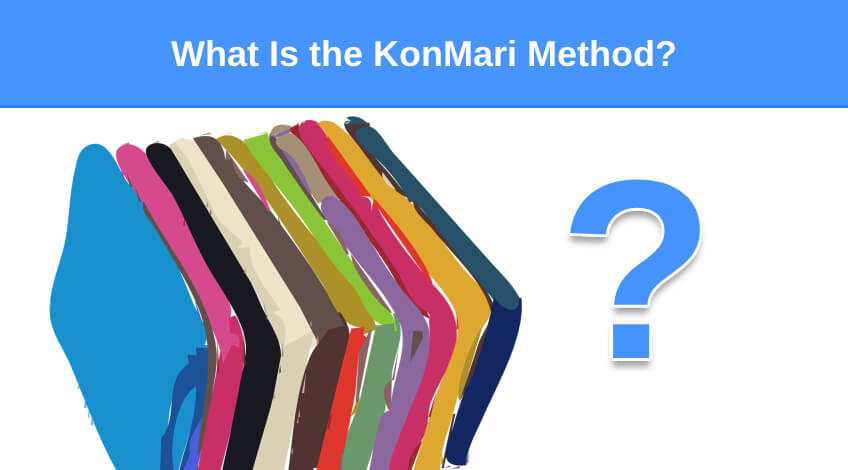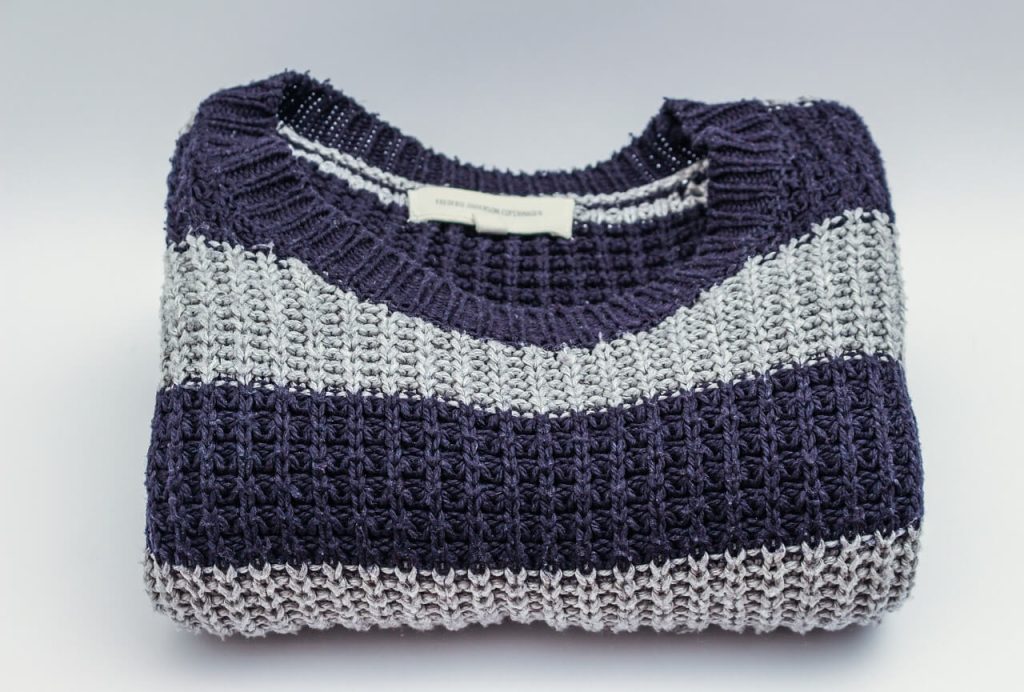
What Is the KonMari Method?
If you are looking into cleaning out your space and making your stuff and clothing more organised, you may have heard about the KonMari Method. But what really is it? and how can you use it to tidy your home?
In this article, we’ll focus on what the KonMari method is and how to apply this system to our clothing – specifically, on the best ways to fold them.
What does the KonMari Method do?
The KonMari Method, named after its creator, Marie Kondo, is a systematic way of tidying up a home. In her book, The Life Changing Magic Of Tidying Up, Kondo, a cleaning consultant, talks about the tips she can give to readers on the method to enjoy a tidy home.
It focuses on getting rid of the unnecessary clutter, keeping things that “spark joy” in their space, and organising them in a way that allows them to perform their functions best.
By helping people put their homes in order, it transforms the place into one that makes its dwellers happy and comfortable.
“This process in turn helps us identify our values and reduces doubt and confusion in making life decisions. If we can have confidence in our decisions and launch enthusiastically into action without any doubts holding us back, we will be able to achieve much more. In other words, the sooner we confront our possessions the better. If you are going to put your house in order, do it now.”
Marie Kondo
Since the KonMari method has become so popular due to it’s effectiveness, we’re now going to share how you can make use of it too.
The 5 Categories
There are 5 Categories in the KonMari Method, namely: Clothes, Books, Papers, Komono (or the Miscellaneous items), and Sentimental Items that many of us have trouble discarding.
If you notice, clothing is the first category that the method takes on. This is mainly because, although we may not notice it, clothing is such a huge part of our day-to-day lives. Clothing represents our characters and if we’re comparing it to other categories, they are much easier to tidy up. Also, many pieces of our clothing are purely functional and only holds little sentimental value.
Since the method focuses on tidying, it includes the process of having to discard pieces of clothing that we no longer use, do not fit best, or just do not make us feel good. Once we’re ready to get rid of those we no longer use, we can get to the next step – which is folding those that do.
Discarding stuff with a purpose
Yes, Marie Kondo is a huge supporter of getting rid of stuff that no longer gives its owner value.
When an item no longer sparks joy in you, it is probably best to have another person who will appreciate it put it to use. If this is not possible, throwing items into the bin is your last resort.
However, she still believes that the things to be donated or thrown away should still receive final grace as, once upon a time, they were items that were used and helpful in a person’s life.
This brings us to the question, “How do you decide what pieces of clothing to keep?”
When it comes to clothing, our tip is to separate each item in your closet into three:
Clothes that you’ll keep
These are pieces of clothing that fit you perfectly, complement your style, and are still in great condition.
Clothes that you’ll donate
These are the clothes that don’t represent you, do not fit well, or just don’t spark joy when you wear them.
Clothes that you’ll throw away or recycle
These are the clothes that are already on their last lap, such as those that are worn and torn.
If you’re still struggling with too many items you want to keep, it’s possible that you may just be hoarding them.
One tip Kondo advises is to touch each item to see if you still feel a little joy or thrill on your body once you do, it’s your sign to keep it. If you don’t feel anything, proceed with donating or recycling the item.
How to organise clothing using the KonMari Fold
After you’re able to separate the clothes you still want to keep, it’s time to learn how to do the KonMari Fold.
Essentially, this method of folding works well because it makes use of “vertical folding.” This means that instead of piling your clothes on top of each other, they are placed next to one another vertically which saves a lot of storage space.

To learn how to fold like Marie Kondo, it’s important to remember the following:
- Clothing should be stored vertically
- You’ll put your palms to use when folding
- Folding usually involves the concept of halves and thirds
When you use this method, you’ll eventually learn how to fold the clothes that allow them to be upright on their own.
Ready to learn? Here’s how Kondo teaches the fold using different pieces of basic clothing:
Folding socks
To fold socks, avoid just rolling them into a ball. This is because socks can get too stretched over time when constantly in tension.
Instead, lay your socks flat, place one over the other, and fold them in half. Make sure to leave a small gap so that it’ll stand on its own, then fold it in half again.
Once done, place your socks upright in your drawer.
Folding underwear
Lay the underwear on a flat surface. Fold the crotch part to the waistband, then fold the sides to the centre. Finally, fold the crotch to the waistband again to make it smaller and place it upright.
Folding T-shirts
To fold shirts, place them first on a flat surface with their front facing down. Next, fold a third of the side into the centre, lengthwise. If the sleeves are longer, fold them so that it does not go over the middle.
Do the same thing to the other side, then fold the neckline to the waist while leaving a small gap, and fold it in half two times to store it upright.
Folding long sleeves and hoodies
Lay the long-sleeved clothing on a flat surface, face down. Fold a third of the side lengthwise, then the sleeve back. Do the same thing to the other side, then fold the neckline to the waist while still leaving a small gap.
Fold again using the same technique twice and store in a standing position.
Folding short trousers
Lay the shorts on a flat surface facing the front and fold one side over the other. Fold the bottom to the waist leaving a gap again, then fold twice and store it upright.
Folding trousers
For trousers or leggings, lay them on a flat surface facing the front, and fold one leg over the other. Tuck the seat or backward part of the trouser on one side, then fold the bottom upwards to the waistband while leaving a small gap.
Fold it twice and store it upright.
Folding dresses
Lay the dress with the front facing up. Fold a third of the side to the centre, then fold the other. Fold the neckline to the bottom part while leaving a small gap, then fold twice. Store upright.
Folding skirts
Similar to how a dress is folded, place the skirt on a flat surface and fold a third of the side to the centre.
Do the same thing to the other side, then fold the hem to the waist while leaving a small gap. Fold again and store upright.
If you want a more visual guide, don’t hesitate to watch the videos Kondo herself has on her YouTube channel[1]!
The Benefits of doing the KonMari Method
Here are the advantages of doing the KonMari fold:
Gives you more space
Storing pieces of clothing vertically is such a huge space-saving technique! Although it does not magically make your clothes smaller after folding, it does store them in a more compact way.
Result = more space for your other clothes!
Time-efficient
Did you know that storing your clothes vertically makes them so much easier to see?
When everything is well-positioned in your closet drawers, it’ll take you less time to get ready.
Preserves your clothing better
Folding your clothing with the KonMari method smoothens your clothes and makes them less wrinkly. It also allows you to store your clothes properly which keeps their lifespan much longer.

Improves your mental health
Fun fact: The KonMari method actually encourages the people trying it out to also reflect on their feelings and express gratitude to the things that they own.
Although it may seem off to others, many feel like the act of organising their stuff and putting them in designated places allows them to control an important aspect of their everyday lives. Hence, it’s also a therapeutic task that could help if you’re feeling stressed or anxious.
Ready to start “sparking joy” with your clothing?
For some, having a cluttered house can lead to a cluttered mind.
If you want to keep your home comfy and cozy, why not take the first step and start reorganising your wardrobe?
Have you tried the KonMari method? How did it work for you? Let us know in the comments!
Frequently Asked Questions
Yes, the KonMari Method is definitely worth trying if you want to keep your home and clothing organised.
Usually, doing the entirety of the KonMari method lasts for around six months.
The KonMari method is not entirely a form of minimalism. Instead, it focuses on having and keeping the items that bring a person joy.
It is better to fold jeans to save space.
The KonMari method of decluttering is a way of organising and tidying up your home. It involves categorising belongings by type and keeping only those items that spark joy, while discarding or donating the rest. This method aims to create a clutter-free living space that promotes a sense of calm and wellbeing.
Also, follow us on Pinterest ...




